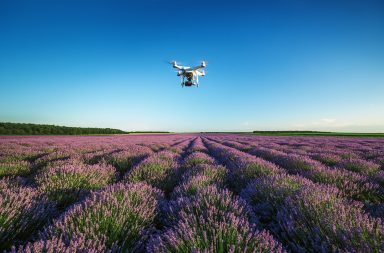Couples photography is a genre of photography that is becoming more popular year by year. Actually, it is a subgenre of portrait photography. By the way, I don’t believe in genres. A great image is a great image, period. Creative photographers blur the lines between genres all the time. Genres are helpful for institutions to create some order and divisions for easier understanding. But, for a photographer, it is just something that might suppress creativity. So, forget about genre and focus on your imagination.
Couple poses aren’t only popular among clients, but among photographers as well. Even though there’s always a couple in your images, you can apply so many different styles and approaches. A couple poses photograph always depends on you. It is your job to create an interesting image, no matter how fascinating your subjects might be.
If you want to improve your couple photography poses skills, I’ll share some tips, tricks, and guidelines to help you master this type of photography.
What Is Couple Photography All About?
As with most portrait images, couple poses photography is about capturing feelings and emotions. To tell the story, you need to guide your subjects while taking care of technical details. There are myriads of possible poses and ideas on how to shoot couples portraits. It is impossible to think of all of them let alone present them in a single article. However, some basic couple poses and techniques can provide great help to get you started. And then, your creativity can take you wherever you want.
Prepare
I’ve said it a million times, but I say it again: you can’t overestimate the preparation. Working with couples is a little bit easier than working with a single model. Your subjects can communicate with you and with each other. That way it’s easier to establish a relaxed and trustful atmosphere. And without it, you can’t have a good shooting session. So, talk to them, try to figure out what both of them like and use it to come up with ideas.
Choosing clothes is also important. You can let your models choose it, but make sure that their outfits are coordinated. They should avoid screaming colors or patterns and drawings that can be distracting. Remember, you don’t want to show their style, but their bond and emotions. I am not saying that outfits shouldn’t be stylish, but they should never draw the attention away from the expression and attitude of your models.
Before you start shooting couple poses you should always have a gallery of reference photos. This gallery should include a couple of standing, sitting, lying down, walking, leaning poses. These are some basic types of poses, but you can also include hugging, kissing or any other poses that you like.
“I love photography, and I love the art of photography.” – Helen Mirren
Posing elements
Besides posing, you need to pay attention to a couple of details to achieve flattering and telling poses.
Posing Hands
“Where should I put my hands?” This is the most common question you’ll hear when shooting any kind of portrait. The truth is that wrong hand positioning can ruin your otherwise gorgeous image. So, the first rule is that hands should look relaxed and natural. Any tension or unnatural position will show in your image, so avoid it unless you deliberately want to show tension.
Don’t hide the entire hand and avoid poses with hands curled into fists.
The best way to solve this problem is to give hands something to do. In couple poses it’s pretty easy because there are many ways such as holding, touching, hugging, or just resting hands on another subject.
You can also use hands to draw attention to certain parts of the image.
Eye Positioning
“Eyes are windows to the soul.” And that’s what you’re after! The direction of gaze is very important to tell your (their) story. Depending on your plan and ideas, your subjects can look straight into the camera or they can look at each other. They can also look somewhere else. In that case, they should both look in the same direction or one of them can enjoy the sunset, for example, while the other one gazes at her/him. Each of these variations shows unity and connection.
“You can’t depend on your eyes when your imagination is out of focus.” – Mark Twain
Background
Use the environment to enhance the scene. An appropriate background can help you a lot to convey the message. Be it a beautiful beach, or a living room, try to harmonize poses with the background. Use the elements such as benches, walls, trees or anything else for sitting, leaning or whatever to create a perfect composition. Negative space can help you with the composition while adding some drama to your image as well.
Another way to use your background is to blur it. If your background is overcrowded or too distracting, use a shallow depth of field to blur it. That way you will additionally accentuate your subjects.
Poses
There is no perfect pose that you can think of in advance. You will always have to make some slight or bigger adjustments in the process. But, it’s helpful to have some solid starting points. So, here are some of the most popular and common couple poses.
Walking Poses
Walking poses are great because they allow your models to be relaxed and natural. The movement itself gives some dynamics and creates mood and narrative. It is also a good way to start the session. Walking around your location allows your models to get in a more relaxed mood while you can make some great shots from the very beginning. Typical angles are from the front and from the back, but side shots can be effective as well. Holding hands, using the background, and a little bit of dancing can help you to capture some amazing moments.
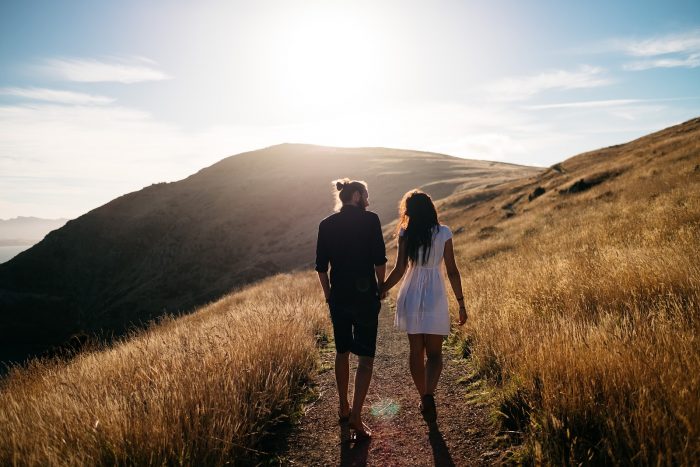
Source: Stocksnap free photo
Standing Poses
Standing positions cover a wide variety of possibilities. Your posing couples can talk, hug, kiss, face each other or face the same direction. They can be very close to each other or not, you can do some close-ups or wide-angle shots with larger backgrounds. Standing poses depend on your shooting plan and location, but whatever you choose, follow the rules from above about background effects, eyes and hands positioning, and you’ll be fine.
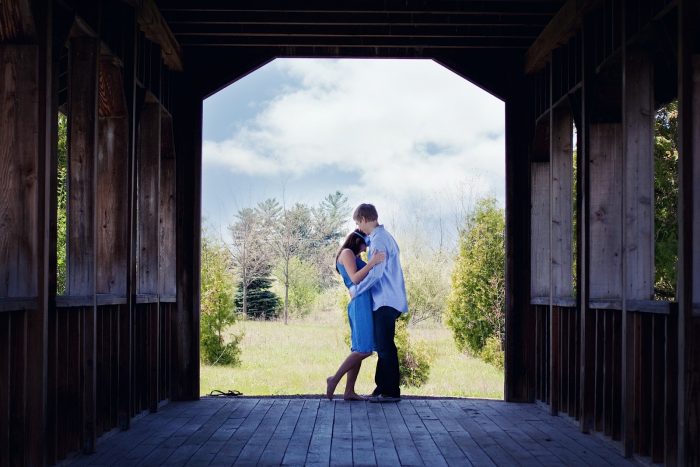
Source: Pixabay
Leaning
This is just a variation of standing poses, but it changes the image dramatically. By the way, it is another way to help your models relax and feel more confident. I keep coming back to creating a relaxed mood and atmosphere, but it is essential. Anyway, leaning poses convey intensity right away and enhance the emotional content. With only one partner leaning your image will appear more natural and not staged.
Sitting Poses
Sitting couple poses offer a variety of possibilities as well. From casual conversation to romantic kiss, and from laughing to dreamy gazes. People are usually more relaxed while sitting. Talk to your models and try to provoke the mood you’re looking for. Sitting poses can allow you to capture some magical, candid moments.
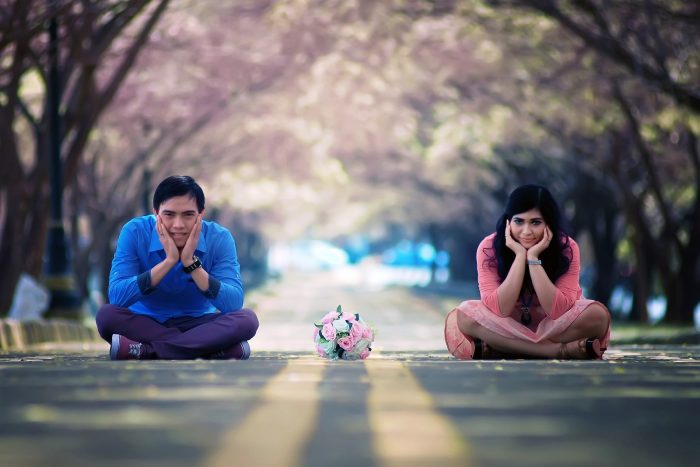
Source: Pixabay
Lying Down
Trying different angles is a common step to find a perfect frame and composition. Shooting overhead while the couple is lying down, can produce some amazing and different shots. Don’t be afraid to experiment and search for unusual and intriguing angles.
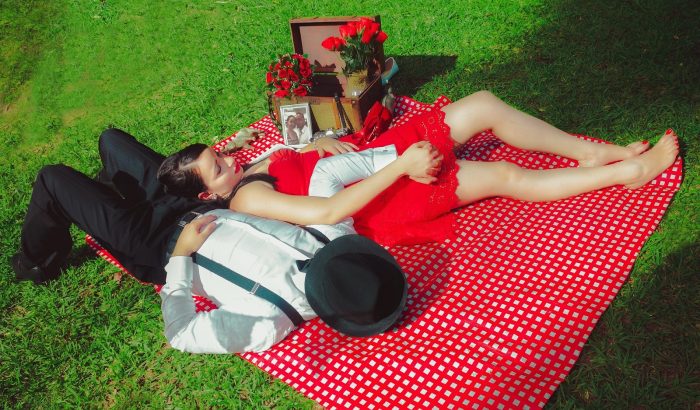
Source: Pixabay
Candid
Try to keep your camera on the couple even as often as possible. No matter how good you are at setting the mood, your subjects will be more relaxed when making a break or between the couple poses. That’s your chance to take some candid and natural shots. Chances are you will capture some moments of magic. Sometimes some of these shots will be the best images of the day.
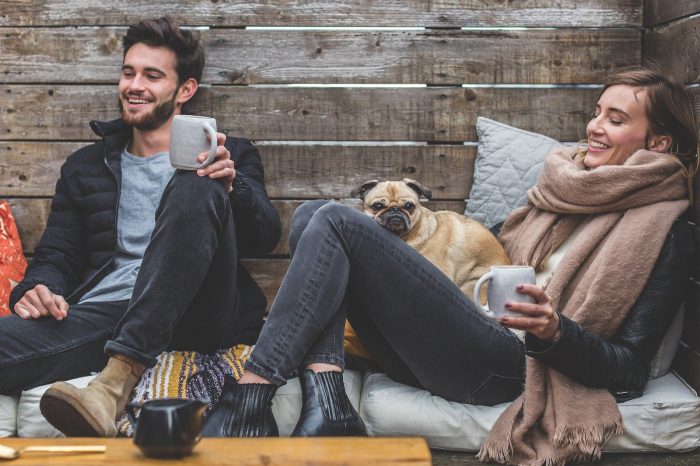
Source: Pixabay
Conclusion
Capturing great couple poses images is not easy. Even the best photographers make lousy photos all the time. So, it doesn’t matter how many times you fail, it’s important to eventually get it right. I like to look at those wasted shots as necessary steps to get a couple of great ones.
Your subjects are not puppets. You can’t pose and freeze them to take your perfect shot. But, your camera can. So, experiment, change poses, play with your models and be ready to seize the opportunity when it comes up.

